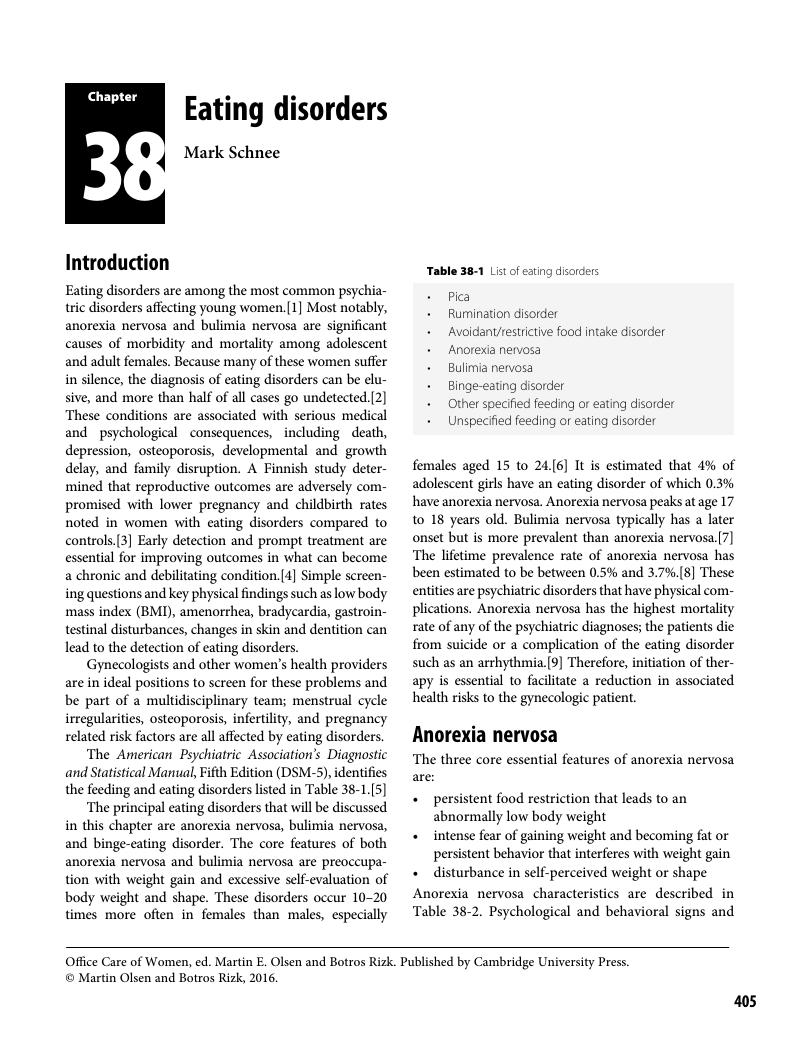Book contents
- Office Care of Women
- Office Care of Women
- Copyright page
- Dedication
- Contents
- Contributors
- Preface
- Section I Health promotion
- Section II Office interventions
- Section III Pregnancy
- Section IV Gynecology
- Section V Reproductive endocrinology and infertility
- Section VI Nongynecologic conditions
- Chapter 34 Office care of breast disorders
- Chapter 35 Urinary tract infections
- Chapter 36 Office care of premenstrual syndrome and premenstrual dysphoric disorder
- Chapter 37 Office management of depression
- Chapter 38 Eating disorders
- Chapter 39 Office care of obese patients
- Chapter 40 Smoking cessation
- Chapter 41 Office evaluation and management of abdominal pain
- Chapter 42 Hypertension
- Chapter 43 Hyperlipidemia
- Chapter 44 Osteoporosis and osteopenia
- Chapter 45 Office care of substance abuse patients
- Chapter 46 Office care of geriatric patients
- Chapter 47 Office care of disabled patients
- Chapter 48 Domestic violence
- Chapter 49 Sexual assault
- Chapter 50 Ethics in office practice
- Index
- References
Chapter 38 - Eating disorders
from Section VI - Nongynecologic conditions
Published online by Cambridge University Press: 05 May 2016
- Office Care of Women
- Office Care of Women
- Copyright page
- Dedication
- Contents
- Contributors
- Preface
- Section I Health promotion
- Section II Office interventions
- Section III Pregnancy
- Section IV Gynecology
- Section V Reproductive endocrinology and infertility
- Section VI Nongynecologic conditions
- Chapter 34 Office care of breast disorders
- Chapter 35 Urinary tract infections
- Chapter 36 Office care of premenstrual syndrome and premenstrual dysphoric disorder
- Chapter 37 Office management of depression
- Chapter 38 Eating disorders
- Chapter 39 Office care of obese patients
- Chapter 40 Smoking cessation
- Chapter 41 Office evaluation and management of abdominal pain
- Chapter 42 Hypertension
- Chapter 43 Hyperlipidemia
- Chapter 44 Osteoporosis and osteopenia
- Chapter 45 Office care of substance abuse patients
- Chapter 46 Office care of geriatric patients
- Chapter 47 Office care of disabled patients
- Chapter 48 Domestic violence
- Chapter 49 Sexual assault
- Chapter 50 Ethics in office practice
- Index
- References
Summary

- Type
- Chapter
- Information
- Office Care of Women , pp. 405 - 413Publisher: Cambridge University PressPrint publication year: 2016



